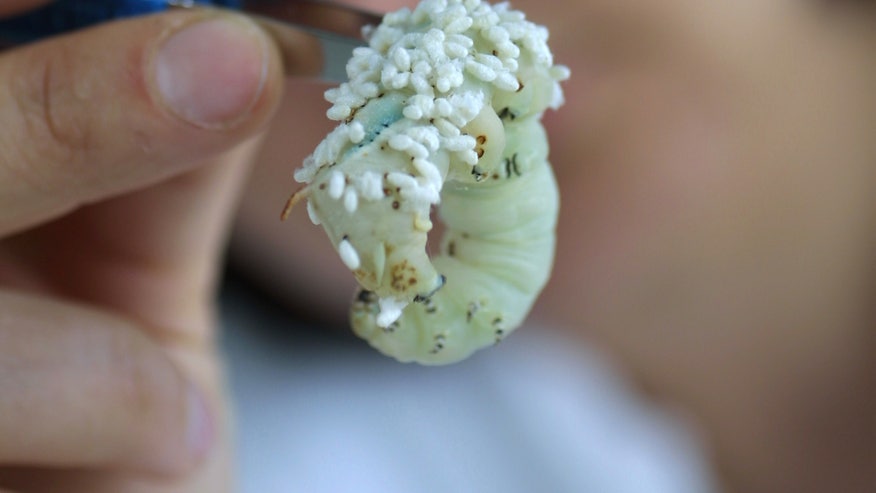When a wasp injects its eggs into a caterpillar, the results are grisly to say the least. The viral DNA of the wasp alters the caterpillar’s immune response, allowing the host to stay alive as the eggs grow into larvae and begin to eat its body. After about 10 days of feeding, the larvae emerge, killing the caterpillar.
What’s interesting is this gruesome process has permanently genetically modified several moth and butterfly species, including the monarch. The same virus that allows the wasps to render the caterpillar powerless as its eggs grow into larvae — the bracovirus — is now part of the butterfly’s genes, and has made them less susceptible to pathogens known as baculoviruses.
This Horizontal Gene Transfer is detailed in a study that appears in the journal PLOS GENETICS. Study co–author Jean–Michel Drezen said he was surprised to find the bracovirus DNA present in the different lepidopteran (moth and butterfly) genomes.
“I did it by looking from curiosity at lepidopteran genomes sequences released on public data banks — in particular when the monarch genome was out in 2011 — and we began to study whether it was real by getting fresh DNA from animals sampled in the field and old DNA from a monarch collection,” Drezen told Foxnews.com. “[Study co-author] Salva Herrero had identified [them] by sequencing a cDNA library of Spodoptera exigua [asparagus fern caterpillar] clones resembling bracovirus genes.”
Though the wasp larvae almost always kill the caterpillar, Drezen has a few theories as to how some of them survive.

0 komentar:
Posting Komentar